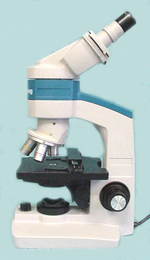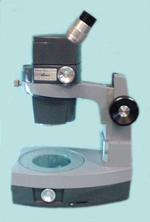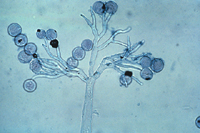Marie A. C. Langham,
South Dakota State University
"Great fleas have little fleas upon their backs to bite 'em, And little fleas have lesser fleas, and so ad infinitum, . . . "
A Budget of Paradoxes
Augustus de Morgan (1806-1871)
Microscopic organisms are unique and often unseen wonders that have as much (or more) diversity than macroscopic organisms. Since its invention, the microscope has served to focus our wonder and amazement at the microscopic world of the small, smaller, and smallest. Whether examining the root hairs on a plant, the spores of a fungus, or the organelles of a plant cell, the microscope allows your students to experience the intricacies of this hidden world that may seem unreal when simply viewed with diagrams or illustrations. Thus, the microscope is one of the most important tools in science laboratories, and it is essential in Plant Pathology where it is utilized in the identification of plant pathogens and their effects on plants.
Teaching students careful and appropriate procedures for using microscopes allows them to more easily utilize the instrument and helps protects the equipment from damage. An excellent source for teaching basic microscopy skills for both compound and dissecting microscopes can be found in Basic Microscopy -An Important Skill for Plant Pathologists by Melissa Riley. The exercise includes pictures of the microscopes with interactive labels as seen in Fig. 1 and Fig. 2.

Figure 1
Click on image to see labeled parts. |
|

Figure 2
Click on image to see labeled parts. |
For additional information on microscopes and microscopy, try these websites:
 |
Views:This delicate tree-like structure is one example of the elegance of the microscopic world. It is the asexual reproductive structure of the downy mildew pathogen, Peronospora parasitica.
|
